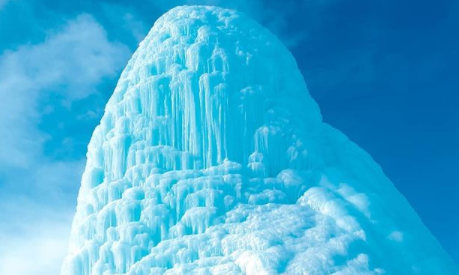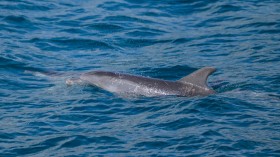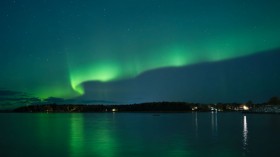A magnificent "Ice Volcano" formed in Kazakhstan, and locals can't stop admiring it.

Towering at around 45 feet tall, the naturally made structure, the "ice volcano" is the result of an underground spring in the country's Almaty region, between the villages of Kegan and Shrganak, around four hours away from the capital city of Nur-Sultan.
The structure formed over a spring that was still spouting water, but the water almost instantly freezes once released. Waves under the ice were pushing water up through the opening, causing what looks like an eruption.
Water particles fly out of the top opening that looks like smoke from a lava-filled volcano.
The Almaty region of Kazakhstan is shrouded in a thick blanket of snow and ice, but the harsh weather has not prevented thousands from visiting the 'ice volcano' of the area.
Last year, a smaller ice volcano formed in the area, but locals said the new one is the first to continuously spray water particles from the top opening. The constant water flowing at its base has even created a natural ice skating rink.
The formation sits between the villages of Kegan and Shrganak, which are located about four hours away from the Kazakh capital city of Nur-Sultan, formerly Astana, Tengri Travel reports. In February 2020, similar structures were spotted by a meteorologist near Lake Michigan.
Related Article: Oldest Ice in Earth: The Hidden Glacier Ice in McMurdo Dry Valleys
Ice Volcanoes
Cort Spholten, a meteorologist with the National Weather Service of Grand Rapids, told USA Today: 'Ice volcanoes occur in locations in which waves hit accumulated ice on the shoreline with some force.'
Ice volcanoes are typically found in arcs along the shoreline, but the one in Almaty formed on top of a spring. During the summer, this area is littered with green vegetation because of the spring.
'We were cold enough to form ice on the shore of Lake Michigan, and water had broken the surface of that ice.'
Although a common occurrence in the area, conditions have to be perfect for the ice structures to form.
Temperatures have to cold enough, the surf must be at least three feet high, and the area needs to be covered with ice.
It erupts by wave energy below the ice shelf, pushing water up through the openings.
These features are distinct from pressure ridges, which are uplifts formed by ice compression against a shoreline or another floe. Instead, ice volcanoes are created by waves colliding with irregularities at the edge of an ice sheet. The abnormalities concentrate the wave energy in a small area, where the ice is eroded to form a V-shaped channel. Spray, ice, and slush splashing out of the feature create a volcanic cone at the channel's shoreward end. This process takes only a few hours.
There is no consensus name for this phenomenon. Due to its similarity to volcanism and particularly cryovolcanism, the term "ice volcano" is frequently used, but it remains controversial. Unlike geysers and related structures, ice volcanoes are not hydrothermal.
ALSO READ: NASA Helps Drill Antarctic, Revealing Something Below the Ice
For more similar news, don't forget to follow Nature World News!
© 2024 NatureWorldNews.com All rights reserved. Do not reproduce without permission.





